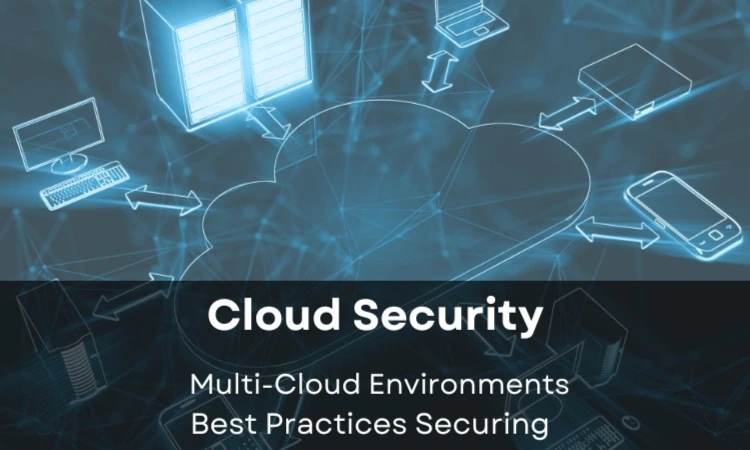In today’s digital landscape, cloud computing has become the backbone of modern businesses, offering unparalleled scalability, flexibility, and cost-effectiveness. However, with the adoption of multi-cloud environments on the rise, ensuring robust cloud security has become more critical than ever. As organizations leverage multiple cloud platforms simultaneously, they face unique challenges in maintaining data integrity, confidentiality, and compliance across diverse infrastructures. In this blog post, we’ll delve into the best practices for securing multi-cloud environments to safeguard your organization’s valuable assets.
Understanding Multi-Cloud Security Challenges
Multi-cloud environments, characterized by the use of two or more cloud computing platforms, offer numerous benefits, including redundancy, vendor diversification, and avoiding vendor lock-in. However, managing security across multiple clouds introduces complexities and potential vulnerabilities. Some common challenges include:
- Diverse Security Architectures : Each cloud provider has its own set of security tools, policies, and configurations, making it challenging to maintain consistency and visibility across platforms.
- Data Protection : Ensuring data protection and compliance across various cloud environments while data is in transit and at rest can be challenging.
- Identity and Access Management (IAM) : Managing user identities, permissions, and access controls across multiple clouds demands robust IAM strategies to prevent unauthorized access.
- Compliance and Governance : Meeting regulatory requirements and enforcing consistent governance policies across diverse cloud environments is essential but complex.
Best Practices For Multi-Cloud Security
- Comprehensive Risk Assessment : Begin by conducting a thorough risk assessment to identify potential security threats and vulnerabilities specific to each cloud provider. Understand the shared responsibility model of each platform and define roles and responsibilities accordingly.
- Standardized Security Policies : Establish standardized security policies and procedures that span across all cloud environments. These policies should cover data encryption, access controls, network security, and compliance requirements.
- Centralized Identity and Access Management (IAM) : Implement a centralized IAM system to manage user identities, roles, and permissions consistently across all cloud platforms. Utilize Single Sign-On (SSO) and Multi-Factor Authentication (MFA) for enhanced security.
- Data Encryption : Encrypt data both at rest and in transit using strong encryption algorithms. Utilize cloud-native encryption services or third-party encryption solutions to protect sensitive data from unauthorized access.
- Network Security : Implement network security best practices such as Virtual Private Clouds (VPCs), network segmentation, firewalls, and intrusion detection/prevention systems (IDS/IPS) to monitor and control traffic between cloud environments.
- Continuous Monitoring and Auditing : Utilize cloud-native monitoring tools or third-party solutions to continuously monitor activity, detect anomalies, and ensure compliance with security policies. Regularly audit configurations and permissions to identify and remediate security issues.
- Secure DevOps Practices :Incorporate security into your DevOps processes by implementing Infrastructure as Code (IaC), continuous security testing, and automated compliance checks to ensure that security is baked into your cloud deployments from the start.
- Backup and Disaster Recovery : Implement robust backup and disaster recovery strategies across all cloud environments to ensure data availability and business continuity in the event of a security incident or outage.
- Vendor Security Assessments : Regularly assess the security posture of your cloud providers through vendor security assessments and third-party audits. Ensure that your providers adhere to industry-standard security certifications and compliance frameworks.
- Employee Training and Awareness : Educate employees about the importance of cloud security and best practices for securely using cloud services. Implement security awareness training programs to help employees recognize and respond to security threats effectively.
Securing multi-cloud environments requires a proactive and holistic approach that addresses the unique challenges posed by diverse cloud infrastructures. By following these best practices, organizations can mitigate risks, safeguard sensitive data, and maintain compliance across multiple cloud platforms. Remember, cloud security is a shared responsibility between cloud providers and users, so staying vigilant and implementing robust security measures are essential for protecting your organization’s assets in the cloud.

